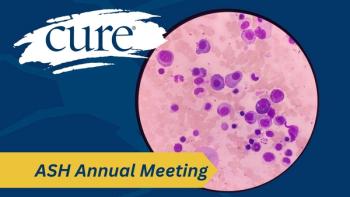
Frontline Zejula Maintenance Therapy Improves Survival in Advanced Ovarian Cancer
Frontline maintenance therapy with Zejula lengthened time without disease progression among women with newly diagnosed, advanced ovarian cancer, according to findings from the phase 3 PRIMA study.
Frontline maintenance therapy with Zejula (niraparib) lengthened time without disease progression among women with newly diagnosed, advanced ovarian cancer who responded to platinum-based chemotherapy, according to findings from the phase 3 PRIMA study presented at the (European Society of Medical Oncology (ESMO) Congress 2019.
"Niraparib is the first PARP inhibitor to demonstrate benefit in patients across biomarker subgroups after platinum-based chemotherapy in frontline, consistent with prior clinical studies of niraparib in recurrent ovarian cancer,” said study author Dr. Antonio Gonzalez-Martin, from the Clinica Universidad de Navarra.
In the phase 3 study, researchers randomized 733 patients to receive either Zejula (487 patients) or placebo (246 patients). Most patients had achieved a complete response to prior chemotherapy (70%). Two-thirds of patients received neoadjuvant chemotherapy, and none received Avastin (bevacizumab), as the study was designed prior to approval of the VEGF inhibitor in the frontline setting.
Zejula improved median progression-free survival (the time from treatment to disease progression) by 5.6 months, compared with placebo. In the overall population of the study, median progression-free survival in the Zejula arm was 13.8 months, compared with 8.2 months in the placebo group, representing a 38% reduction in the risk of progression or death with the addition of the PARP inhibitor. In patients with tumors that tested positive for homologous recombination deficiency (HRD), the median progression-free survival was 21.9 months compared with 10.4 months for placebo, respectively.
At the interim analysis, median overall survival was not yet reached; however, at this early time point, the 24-month overall survival rate in the full population was 84% with Zejula and 77% in the placebo arm. In the HRD-positive cohort, the 24-month overall survival rate was 91% and 85%, respectively.
Analysis of the HRD group was further broken down by BRCA status. For those with a BRCA mutation, the median progression-free survival was 22.1 months with Zejula compared with 10.9 months for placebo. In those with HRD-positive tumors who were negative for a BRCA mutations, the median progression-free survival was 19.6 compared with 8.2 months, respectively.
Zejula also outperformed placebo across several patient subgroups for progression-free survival, including those with HRD-negative tumors (8.1 months versus 5.4 months). Interim overall survival data for HRD-negative patients showed an 81% 24-month overall survival rate for Zejula, compared with 59% for placebo.
More patients experienced treatment-related side effects of any grade in the Zejula arm compared with placebo (96.3% vs 68.9%). The most common grade 3 or higher side effects in the Zejula and placebo groups included anemia (31.0% vs. 1.6%), thrombocytopenia (28.7% vs. 0.4%), platelet count decrease (13.0% vs. 0%) and neutropenia (12.8% vs. 1.2%).
Overall, 70.9% of patients required a dose reduction in the Zejula arm,and 12% of patients discontinued therapy due to side effects.





